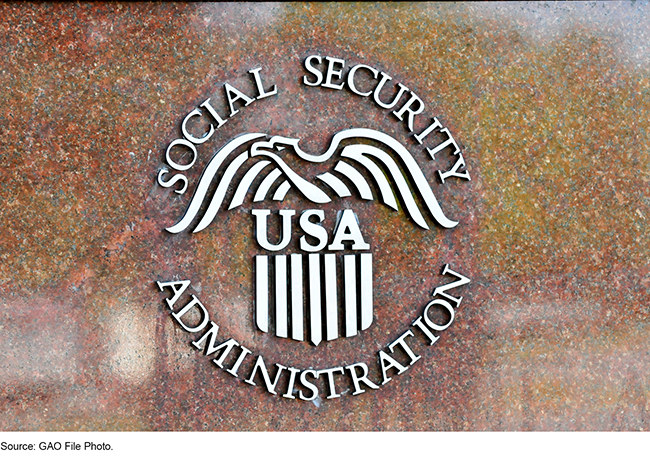Disability Insurance: SSA Faces Ongoing Challenges with Overpayments
Fast Facts
We testified about the Social Security Administration's challenges with overpaying disability insurance benefits.
Individuals can receive benefits if their disabilities prevent them from working. But if they return to work and SSA doesn't adjust the benefits, they might have been overpaid. This is a problem for beneficiaries—who may have to repay benefits—and SSA, as some overpayments are never paid back at all.
SSA has made progress on some of our prior recommendations on this issue, like one to measure how effective its corrective actions on overpayments are. But it hasn't addressed five others, including two priority recommendations.

Highlights
What GAO Found
Overpayments in the Social Security Administration's (SSA) Disability Insurance program can impose burdens on disability insurance beneficiaries and taxpayers. GAO and past research have consistently found that the majority of disability insurance beneficiaries who have earnings sufficient to affect their benefits will receive an overpayment. The financial burden of these overpayments can be high.
In 2015, GAO reported that more than half of all disability insurance overpayments were paid to beneficiaries earning above program limits. Further, a 2019 study conducted by Mathematica and SSA, found that 71 percent of DI beneficiaries with earnings sufficient to affect their benefits receive overpayments, which often accumulate to thousands of dollars. Specifically, the study found that overpayments lasted for a median of 9 months and accrued a median amount of $9,282.
In addition, according to SSA's Office of the Inspector General, overpayments attributed to disabled beneficiaries working above program limits have been a leading cause of improper payments, amounting to $755 million in taxpayer funds at risk in 2021.
SSA has faced challenges preventing, detecting, and recovering overpayments in the past, and GAO has made a number of recommendations related to improving SSA's efforts. Two of GAO's longstanding priority recommendations pertaining to overpayments remain open.
- Preventing potential overpayments: one recommendation focuses on preventing potential overpayments to individuals receiving concurrent federal workers' compensation benefits. Specifically, in 2015, we recommended that SSA strengthen internal controls designed to prevent DI overpayments due to the concurrent receipt of Federal Employees' Compensation Act (FECA) benefits. In response, SSA is working towards an agreement with the Department of Labor to use FECA benefit data to improve efficiencies in its ability to offset or reduce DI benefits when an individual is concurrently receiving FECA benefits.
- SSA's efforts to recover overpayments: the second priority recommendation in this area focuses on SSA's efforts to recover overpayments. Specifically, in 2016, we recommended that SSA adjust the minimum withholding rate to 10 percent of monthly DI benefits to allow quicker recovery of debt. This change would increase scheduled collections and reduce the time it will take to fully recover overpayments and result in tens of millions of dollars in overpayment debt recovered over a 5-year period.
Implementing these recommendations could help improve the financial status of the DI program and ensure that SSA does not continue overpaying beneficiaries who may have difficulty repaying debt incurred by overpayments.
Congress can also play a key role in addressing underlying issues related to preventing improper payments. For example, in 2022, GAO recommended that Congress amend the Social Security Act to accelerate and make permanent the requirement for the Social Security Administration to share its full death data with the Department of the Treasury's Do Not Pay system. Sharing these data on an ongoing basis will allow agencies to enhance their efforts to identify and prevent improper payments to deceased individuals.
Why GAO Did This Study
SSA's DI program provides benefits to millions of Americans who can no longer work due to a disability. In fiscal year 2022, about 8.95 million DI beneficiaries received approximately $146 billion in benefits. While SSA reports that most benefits are paid correctly, beneficiary or SSA error can result in overpayments—that is, payments made in excess of what is owed. Overpayments can pose a financial hardship for beneficiaries responsible for repaying the debt. They may also result in the loss of taxpayer dollars, either because beneficiaries do not repay their debts or because they are eligible to have their overpayment debts waived by SSA. This testimony describes: (1) the impact of overpayments on DI beneficiaries and taxpayers, and (2) SSA's challenges with preventing, detecting, and recovering overpayments and related GAO recommendations. This statement is based primarily on prior GAO reports issued from 2015 to 2023.
For more information, contact Elizabeth Curda at (202) 512-7215 or curdae@gao.gov.
